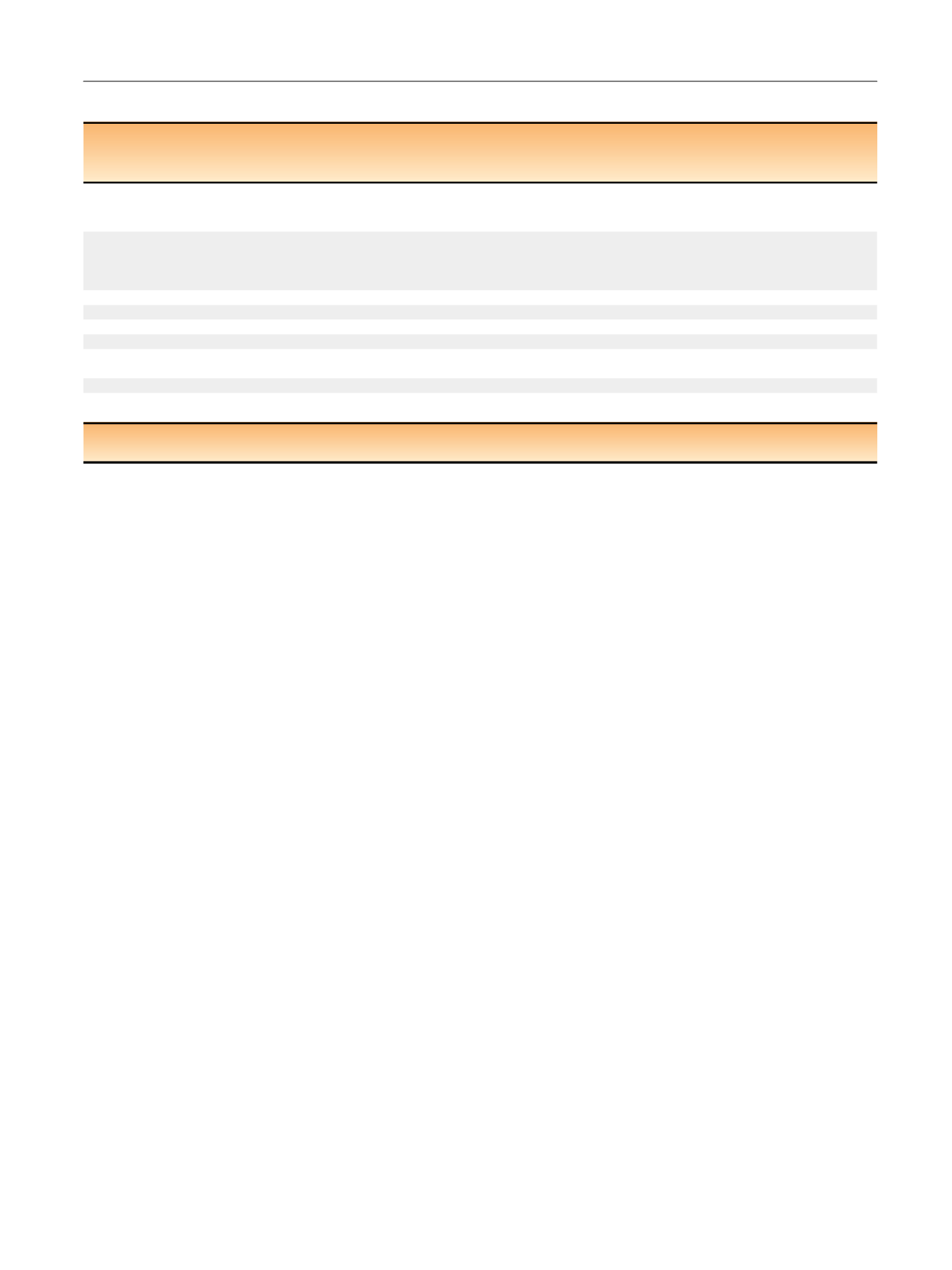

localizations (rectovaginal, colorectal, and bladder endo-
metriosis)
[83–92] .To the best of our knowledge, only one
randomized controlled trial compared combined hormonal
contraceptives with progestogens
[84], while no random-
ized comparisons have been conducted between different
types of estrogen-progestins and progestogens. Hence,
it may not be currently possible to identify the best
compound for these patients in terms of long-term safety,
efficacy, and tolerability. In general, currently available
solid evidence demonstrates the efficacy of estrogen-
progestins and progestins in patients with DIE
[82,93].
However, it has recently been suggested that both the
symptoms associated with BE and the lesion itself may
respond suboptimally to medical therapies owing to
desmoplastic reaction within the detrusor resulting from
repetitive bleeding and resorption of menstrual debris
[94]. Noe¨l et al
[95]analyzed the expression of estrogen and
progesterone receptors in the smooth muscle component
from 60 patients with deep endometriotic lesions, ten of
whom had bladder nodules. Estrogen and progesterone
receptors were well represented in all detrusor lesions. In
addition, progesterone receptors were more abundant than
estrogen receptors
[95]. Therefore, these forms could also
be potentially responsive to hormonal manipulation.
Over the past 16 yr, a total of 36 cases of women with BE
treated medically have been described in nine reports
( Table 4 ). The largest experience regards the use of
combined oral contraceptives (COC). Westney et al
[91]treated 13 women with low-dose monophasic COC, or a
decrease in the estrogen component or addition of
progesterone to the current regimen, for a period ranging
from 8 to 24 mo (mean 19 mo), and reported partial or
complete resolution of symptoms in 12 (92%) patients.
Fedele et al
[92]conducted a prospective, comparative,
6-mo study among ten patients with BE, five of whom were
treated with a COC used continuously, and five with a
gonadotropin-releasing hormone (GnRH) agonist. At the
end of the therapy, cystoscopy revealed nearly complete
disappearance of the characteristic lesion in women treated
with the GnRH agonist, whereas marked albeit not
complete regression was observed in those who used the
COC.
The second most frequently studied medical therapy for
BE is dienogest, a 19-nortestosterone derivative with anti-
androgenic properties. Takagi et al
[96]treated a 39-yr-old
woman with a positive histologic diagnosis with oral
dienogest (2 mg/d) for 6 mo. Her urologic symptoms were
promptly relieved and remarkable lesion reduction was
observed. Unexpectedly, the patient was symptom-free at
1 yr after drug discontinuation
[96]. Harada et al
[97]used
the same dose for 11 mo in one patient and observed a
similar clinical and anatomical response. No post-treatment
follow-up was reported
[97] .Agarwal et al
[98]observed
relief of catamenial dysuria and hematuria and a
>
50%
reduction in lesion size in a woman treated with dienogest
for 16 mo for a 3-cm endometriotic bladder nodule. Angioni
et al
[99]used the same dienogest dose for 1 yr in six
women who requested a medical approach for BE. Their
pain and urinary symptoms improved very quickly and the
nodule decreased remarkably in size in all patients
[99]. Leone Roberti Maggiore et al
[39]used dienogest
2 mg/d to treat a 34-yr-old nulliparous woman with
urgency and stress urinary incontinence associated with
BE who refused surgery. After 12 mo of therapy, her
symptoms improved and urodynamic findings normalized
[39].
Aromatase inhibitors were used in three women, one
postmenopausal
[100]and two premenopausal
[101]. In the
former case, oral letrozole (2.5 mg three times/wk for 8 mo)
was successfully used alone in a woman with an
endometriotic bladder nodule identified after hysterectomy
and bilateral salpingo-oophorectomy
[100]. In the latter
cases, the same drug was used daily (2.5 mg per os) and in
combination with oral norethisterone acetate (2.5 mg/d) to
avoid ovarian stimulation. The double-drug regimen
improved pain and urinary symptoms promptly, but one
Table 4 – Main characteristics and findings of studies investigating medical treatment of bladder endometriosis
Study
Type Setting Patients
Treatment
type
Mean
Symptom
improvement,
n
(%)
Lesion regression
(
n
)
FU (mo)
Westney 2000
[91]RS
SI
13
Low-dose
monophasic
COC
18.6
12 (92.3)
NR
Fedele 2008
[92]PS
SI
10
Continuous
COC (
n
= 5)
GnRHa (
n
= 5)
6
NA
COC group: marked but not
complete regression;
GnRHa group: nearly
complete disappearance
Takagi 2011
[96]CR
SI
1
Dienogest
6
1 (100)
Remarkable reduction in size
Harada 2011
[97]CR
SI
1
Dienogest
11
1 (100)
Remarkable reduction in size
Agarwal 2015
[98]CR
SI
1
Dienogest
16
1 (100)
>
50% reduction in size
Angioni 2015
[99]CS
SI
6
Dienogest
12
6 (100)
Remarkable reduction in size
Leone Roberti
Maggiore 2015
[39]CR
SI
1
Dienogest
12
1 (100)
22.6% reduction in size
Mousa 2007
[100]CR
SI
1
Letrozole
8
1 (100)
NR
Ferrero 2011
[101]CS
SI
2
Letrozole +
NETA
10
2 (100)
RS = retrospective study; PS = prospective study; CR = case report; CS = case series; SI = single institution; FU = follow-up; COC = combined oral contraceptive;
GnRHa = gonadotropin-releasing hormone agonist; NETA = norethisterone acetate; NR = not reported.
E U R O P E A N U R O L O G Y 7 1 ( 2 0 1 7 ) 7 9 0 – 8 0 7
799
















